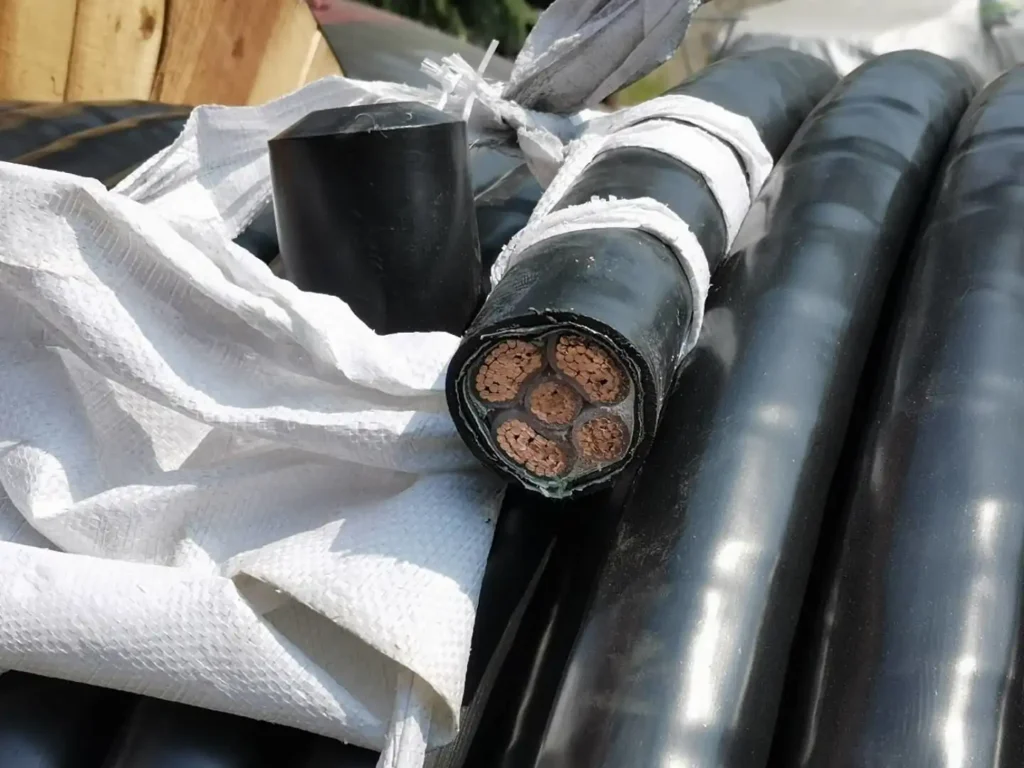Magnesium oxide is an indispensable key material in mineral insulated (MI) cables, where its electrical insulation, thermal stability, and chemical stability determine the cable’s safety performance. Controlling its performance, especially purity, hygroscopicity, and particle size, is a core technical aspect of ensuring the manufacture of high-quality MI cables.

I. The Role of Magnesium Oxide in Mineral Insulated Cables
- As an Inorganic Insulating Material: Magnesium oxide (MgO) is a high-melting-point, high-resistivity inorganic powder material widely used in mineral insulated (MI) cables as the insulating medium between the copper conductor and the metal sheath (typically copper or stainless steel).
- Providing High-Temperature Stable Insulation: Magnesium oxide maintains stable insulation properties at temperatures up to 1000°C or even higher, making this type of cable particularly suitable for high-temperature environments or applications with extremely high fire safety requirements (such as subways, tunnels, nuclear power plants, etc.).
- Enhancing Mechanical Strength and Compression Resistance: Dense packing of magnesium oxide powder not only provides electrical insulation but also enhances the mechanical structural strength of the cable, resisting external compression, vibration, impact, and other harsh conditions.
- Improving Fire Resistance and Corrosion Resistance: Magnesium oxide is non-combustible, corrosion-resistant, and non-toxic. Combined with a metal sheath, it gives the entire cable structure excellent fire resistance, high-temperature resistance, and water resistance.
II. Key Performance Requirements of Magnesium Oxide
To ensure cable performance, the magnesium oxide powder used must meet a series of physical, chemical, and electrical parameter requirements:
- High Purity:
- Typical Purity Requirement: ≥ 99% MgO
- Excessive impurities (such as Cl⁻, SO₄²⁻, Fe₂O₃) can affect insulation resistance, hygroscopicity, and stability.
- Excellent Electrical Insulation Performance:
- Resistivity: Generally required to be ≥ 10¹² Ω·cm (at room temperature)
- It must maintain good insulation performance even at high temperatures (e.g., 500–1000°C).
- Low Hygroscopicity (Moisture Absorption): Magnesium oxide has a strong affinity for water; absorbing moisture significantly reduces its insulation performance. Therefore, low moisture absorption is required, along with strict drying and sealed storage procedures.
- Appropriate Particle Size Distribution:
- Particle size is typically in the range of 10–60 μm, which helps to improve compaction density and reduce porosity.
- Particle size that is too large affects filling uniformity, while particle size that is too small increases hygroscopicity.
- High Thermal Conductivity: Magnesium oxide has excellent thermal conductivity, which helps to quickly transfer heat from inside the cable, reducing operating temperature and extending service life. Thermal conductivity is generally 20–40 W/m·K at room temperature.
- High Temperature Resistance: Magnesium oxide has a melting point of approximately 2852°C and a high decomposition temperature, enabling it to maintain insulation performance in the event of a fire.
III. Usage and Quality Control Key Points
- Pre-treatment and Drying: Magnesium oxide must be dried before use (e.g., 300–600°C drying treatment) to avoid moisture absorption.
- Vacuum Filling and Compaction: Ensure uniform and dense powder filling, avoiding voids and partial discharge.
- Storage Requirements: Sealed packaging, moisture-proof, water-proof; nitrogen or dry air storage environments are often used.
- Incoming Inspection Indicators: Content analysis, resistivity testing, particle size distribution testing, hygroscopicity testing, etc.
